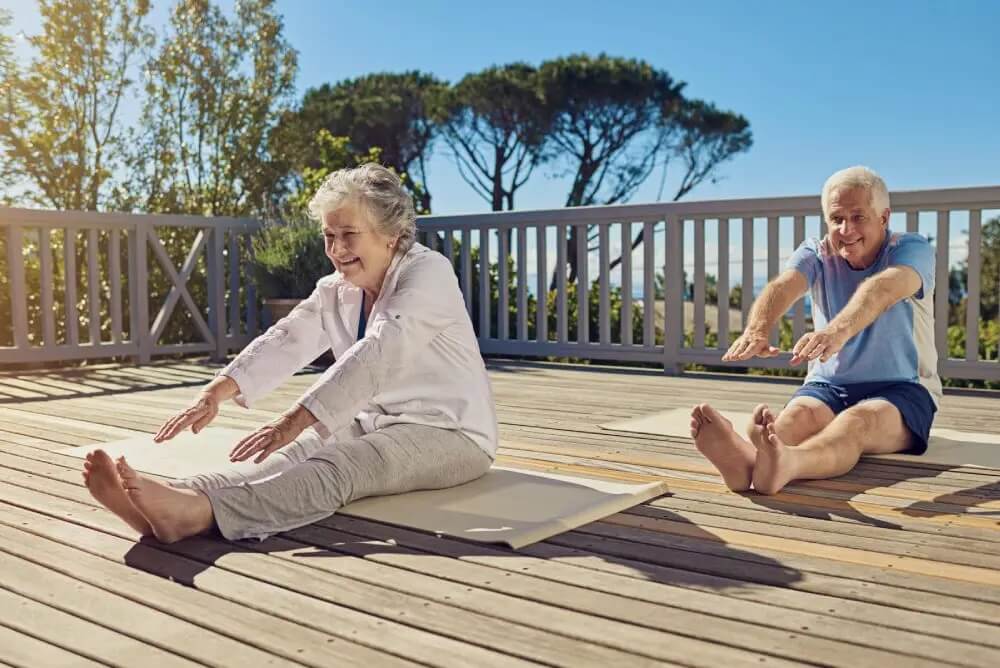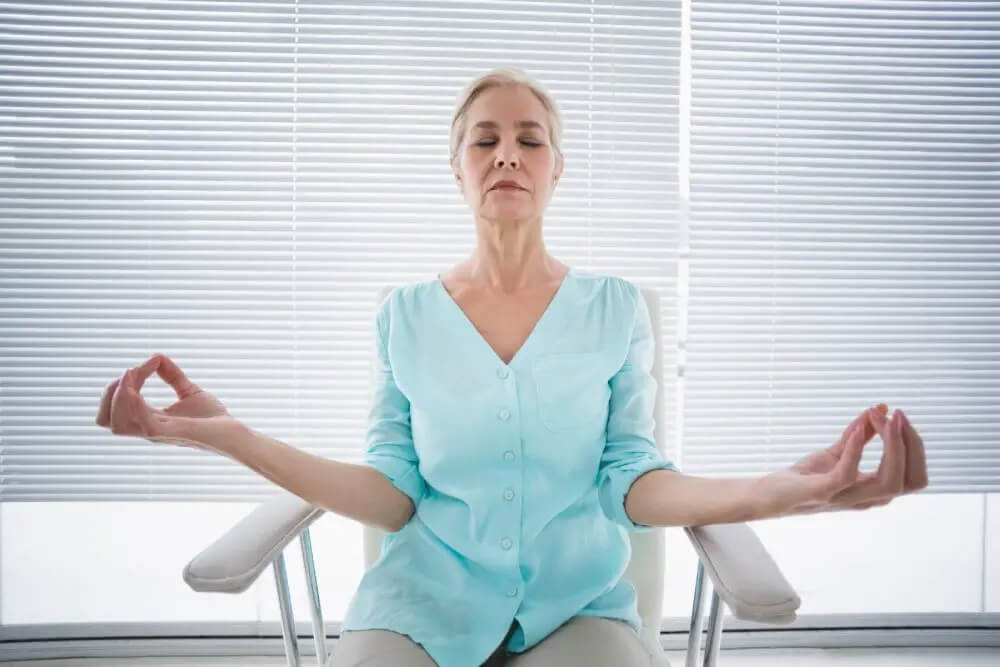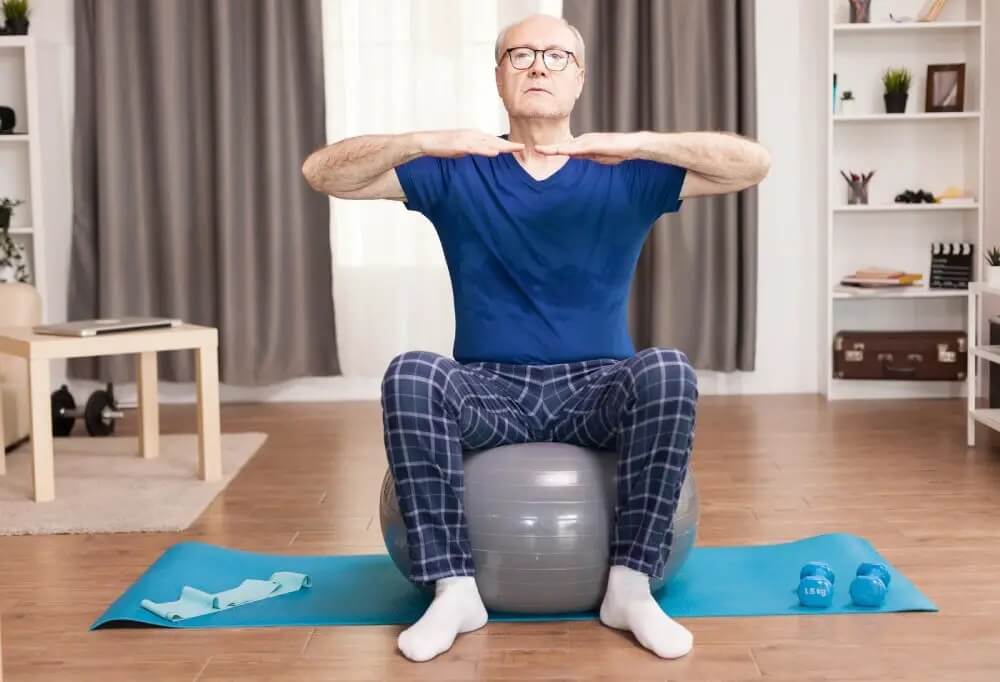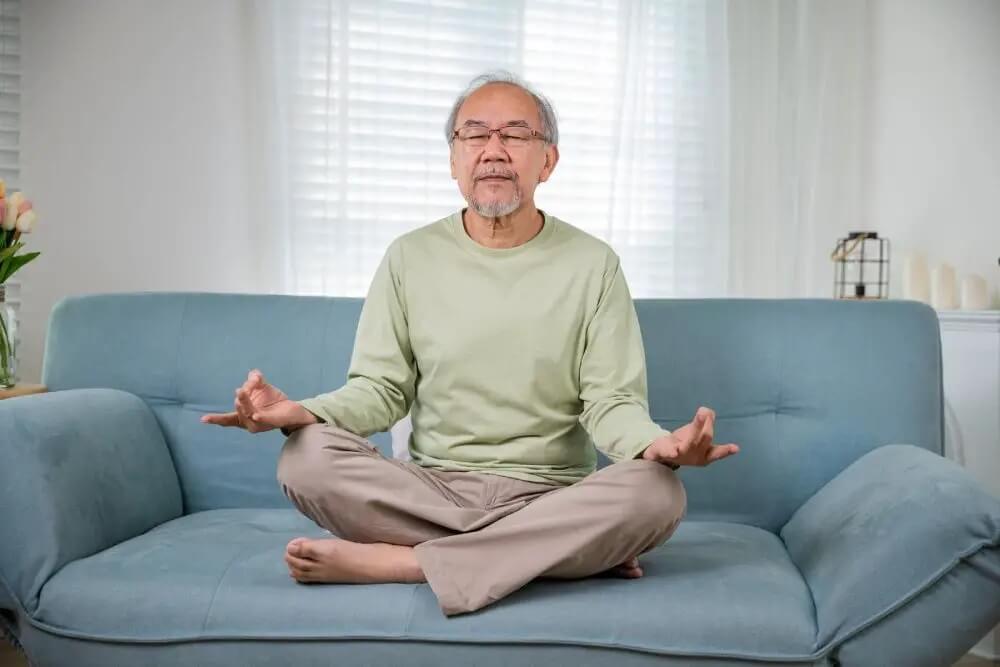Have you ever wondered, “What is chair yoga?” Chair yoga is a low-impact yoga. It is ideal for seniors, people recovering from injuries, and those new to yoga.
Every week at my gym, there’s a group of older people who take over one of the classrooms and go through yoga. I say older people, but while the class participants are mostly seniors, there are a few younger people mixed in. Unlike other yoga classes, however, this group seems to do nearly all of the poses while sitting in chairs.
This had me wondering, what is chair yoga? Chai yoga is a low-impact form of yoga where many of the poses are performed sitting down.
Contents
How Chair Yoga Got Started
Chair yoga got its start several years ago when yoga was becoming more popular among a mass audience. While plenty of people were drawn to yoga because of its promise to improve flexibility, muscle strength, and overall fitness, many of the moves were just too difficult for many people with mobility issues to complete.

The issue was that many people with mobility issues, such as seniors, could benefit a lot from a yoga class. Yoga is a routine that utilizes both large and small movements, but the movements are done slowly.
There is rarely an additional weight added to the movements, making it an ideal way for people who have a low muscle tone to get into a fitness routine. Many yoga classes also tend to be calm, making them a great choice for people who are put off by loud and fast-paced cardio classes.
It grew popular as several fitness instructors and yogis were looking for ways to either introduce yoga movements into their already existing classes for senior citizens, while others were looking for ways to encourage seniors and other people with mobility issues to try a yoga class. While the benefits were clear, many people in these groups were hesitant to try a yoga class where they felt they wouldn’t fit in or be embarrassed because they couldn’t complete all of the moves.
Why Chairs?

To further reduce the impact of yoga and make it more accessible to a broader audience, several of these fitness instructors began to modify yoga moves so that they could be done with the aid of simple common objects that could be found around the home or gym.
Chairs are found practically everywhere, and they are already designed to support the weight of the human body. Because they’re so common, it is possible to start chair yoga in a structured class or through the use of exercise videos.
By using a chair, it is possible to have support while both sitting and standing. In fact, many chair yoga classes have segments that require participants to not just sit in the chair but also use the back part of the chair while standing, much like a ballet dancer would use a barre. Check out our explainer on why you experience nausea after yoga.
Benefits Of Chair Yoga
Chair yoga was designed to increase mobility, flexibility, and muscle strength for people who would otherwise be unable to participate in a standard yoga class. The classes are meant to slowly introduce the concepts and movements of yoga, making them ideal for anyone who has never been in a fitness class before.

Despite the fact that chair yoga has been designed to be as low impact as possible, many people have reported gaining a better sense of balance and wellness from participating in these types of classes. In fact, many of the movements are now commonly used by personal trainers and physical therapists to improve balance and muscle tone.
When Is it Time To Move On From Chair Yoga?
Participating in chair yoga is a great way to start on the path to fitness, but it will not give a non-disabled person a lot of results. These classes are not ideal for losing weight or building a large amount of muscle. You might be interested in our rocket yoga explainer.
Once the movements in a chair yoga class no longer seem challenging, it may be time to move to a slightly harder class. Don’t be afraid to ask your yoga instructor if they think you’re ready to move on. Remember that the purpose of the class is to improve your health, and having students who want to move on to more challenging classes and movements is a sign that the instructor is doing their job well.
If you don’t have an instructor who can make recommendations for the next class, look for other low-impact types of yoga or movement. Many people will try a beginner yoga class after “graduating” from chair yoga, or they may go on to try a class such as water aerobics. You might also be interested in our guide on whether should you practice meditation before yoga.



